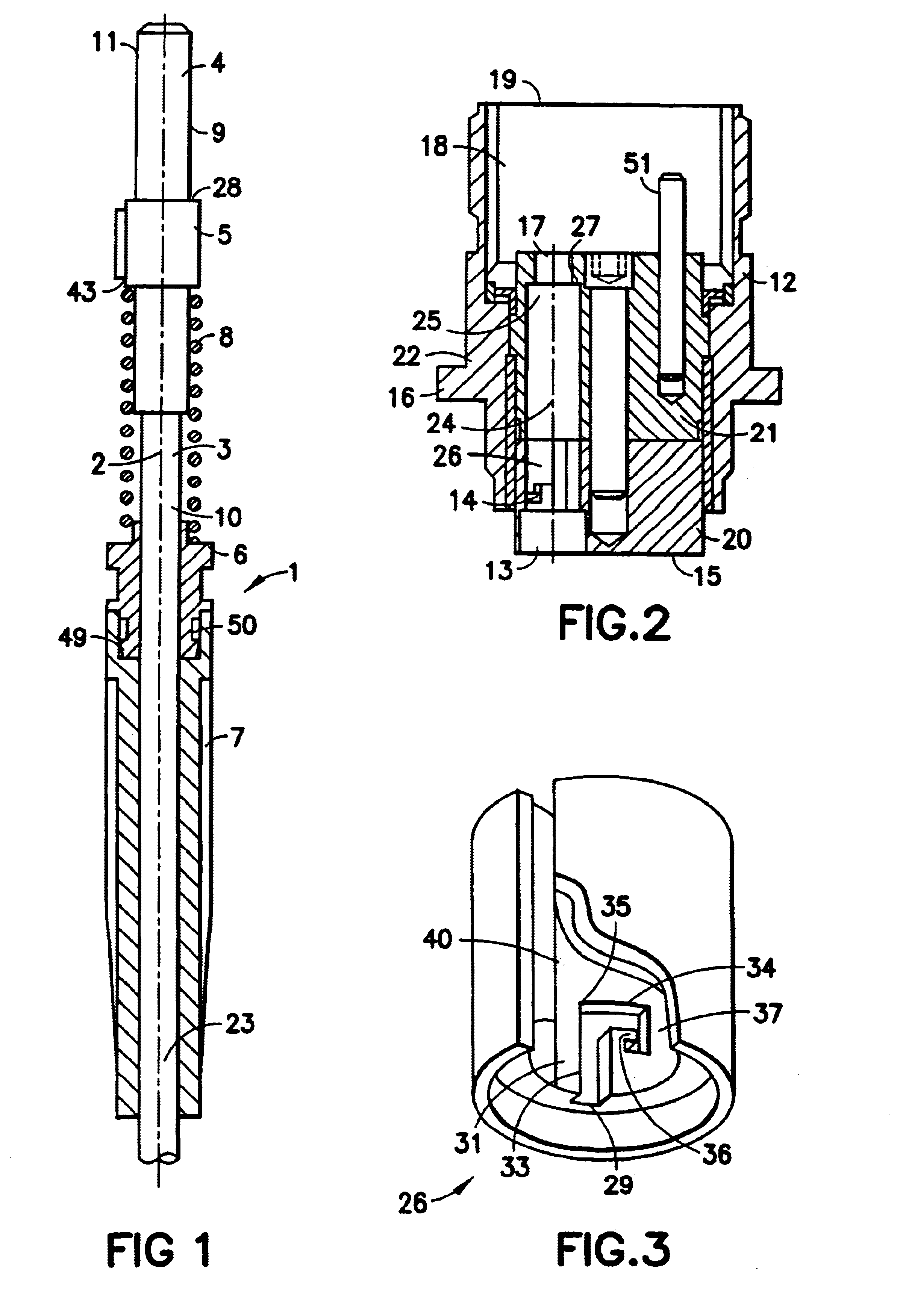Easy-to-mount optical connector system
a technology of optical connectors and connectors, which is applied in the field of easy-to-mount optical connector systems, can solve the problems of dangerous use of tools to obtain the exit of optical fibers from connectors, damage to the connection end of contacts, and pose problems
- Summary
- Abstract
- Description
- Claims
- Application Information
AI Technical Summary
Benefits of technology
Problems solved by technology
Method used
Image
Examples
first embodiment
FIG. 4 shows a first embodiment in which the catch 6 has at least one external protruding feature 30 to form a bayonet designed to co-operate with the complementary raised feature 29 provided on an internal wall 31 of the channel 14. The protruding feature 30 corresponds for example to a parallelepiped or cylindrical pin raised perpendicularly to an external wall 32 of the catch 6. In a preferred embodiment, the complementary recess 29 is preferably formed in the rear channel portion 26.
For example, the complementary recess 29 forms an internal hollow in the inner wall 31, for example a guide way in which the protruding feature can move. The guide way 29 is elbowed. The guide way 29 preferably has a first section 33 and a second section 34, the second section 34 being separated in the first elbow 35 of the first section 33. The internal hollow 29, namely the first section 33, has a length along the central axis 24 that is limited in order to limit the penetration of the protruding f...
second embodiment
In a second embodiment, the catch 6 has a thread on its external rim that co-operates rotationally with a complementary thread on the inner wall 31 of the channel 14.
The catch 6 is fixedly joined to the rear part 7. In a first example, the catch 6 has a rear end 47 in the shape of a harpoon 48 to co-operate with an inner wall 49 of a cavity 50 of the rear part 7. In a second example, the inner seal 45 is positioned in such a way that it is stressed between the cable 3 and inner walls of the catch 6, which are themselves stressed, under the effect of the inner seal 45, against the inner walls 49 of the cavity 50 of the rear part 7.
The complementary connector 12 may furthermore have realignment means 51. A realignment means may extend into the receiving cavity 18 or else be a receiving cavity to receive the complementary alignment device of the complementary connector.
PUM
 Login to View More
Login to View More Abstract
Description
Claims
Application Information
 Login to View More
Login to View More - R&D
- Intellectual Property
- Life Sciences
- Materials
- Tech Scout
- Unparalleled Data Quality
- Higher Quality Content
- 60% Fewer Hallucinations
Browse by: Latest US Patents, China's latest patents, Technical Efficacy Thesaurus, Application Domain, Technology Topic, Popular Technical Reports.
© 2025 PatSnap. All rights reserved.Legal|Privacy policy|Modern Slavery Act Transparency Statement|Sitemap|About US| Contact US: help@patsnap.com



